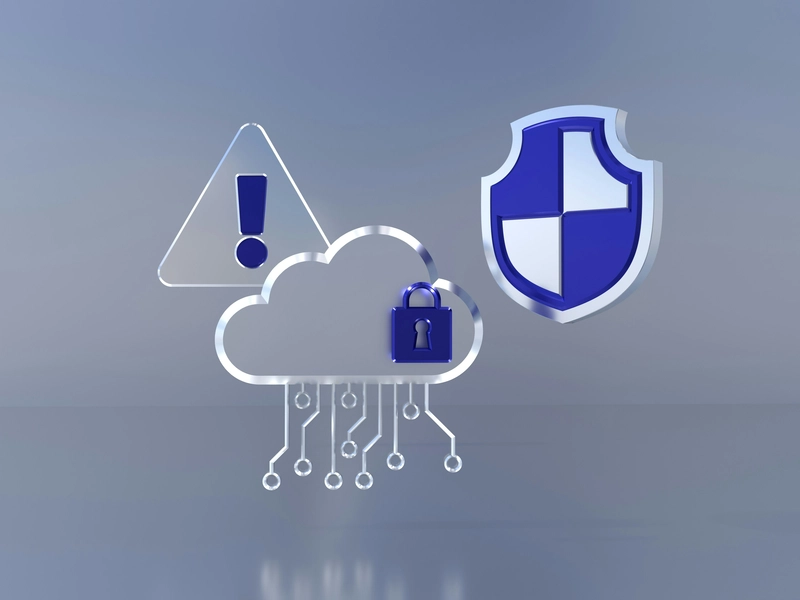How AI is Revolutionizing Cloud Security: Threat Detection and Response
Introduction Cloud engineering is one of the many industries that have changed as a result of the development of artificial intelligence (AI). AI has improved decision-making, stimulated creativity, and automated procedures. Cyber risks are on the rise as more businesses turn to the internet to expand their operations, demanding the use of advanced security measures. Since the traditional methods are time-consuming and inadequate to defend against modern attacks, it is challenging to restrict these risks when using them. Since AI thinks more quickly, scales easily, and is quick, it is becoming a thing in cloud security. By the end of this article, you will be able to know the common threats in the cloud, the traditional security approaches, and how AI is revolutionizing cloud security. The growing adoption of cloud computing Cloud computing has increasingly grown over the years because of how it has helped businesses manage their applications and changed how IT solutions are consumed and supplied. Here are some of the advantages that have influenced its growth: Scalability Businesses can scale up or down without investing in any software or hardware with the help of cloud computing. Because of this swiftness, they can quickly respond to changes in demand. Saves cost Cloud computing has helped businesses save on the cost of getting hardware, software, and maintenance. Cloud computing is cost-effective and suitable for all businesses. Reliability Cloud computing is secure and reliable as data is stored in secured, off-site servers that are backed up regularly. Common Threats in Cloud Environments Given how quickly cyberattacks are spreading, you should be aware of some common cloud environment vulnerabilities. Since attackers are now using AI, it is simple to automate. It is crucial to be mindful of these threats to prevent them. Data breaches Data can be compromised or breached when it is transmitted without security protocols or is stored incorrectly. It is readily accessible to attackers who take advantage of these flaws to obtain private data. Cloud data breaches can involve multiple levels of shared accountability, where both the cloud provider and the user contribute to environment security, in contrast to common traditional premises breaches. Misconfigurations This happens when cloud services, such as virtual machines or databases, are configured with poor security measures or improper access permission, such as when encryption is not enabled or identity and access management (IAM) settings are not properly configured. The complexity of cloud environments causes misconfigurations, making it challenging for businesses to manage and understand these settings, ultimately resulting in accidental exposure. DDoS attacks This attack is a malicious act on a targeted server by an attacker to interfere with the regular operation of the server or network. This threat overloads the targeted server or network with excessive internet traffic. This attack can be successful with the help of several hacked computer systems as sources of attack traffic. The Limitations of Traditional Security Approaches Using the traditional approach to protect on-premises, data protection procedures and practices is entirely your responsibility. Onsite backups require significant time, hardware, and effort, and they are more difficult to scale up without a hardware and space investment. It is very dependent on the IT team and requires continuous monitoring from them. This dependence on manual oversight not only makes the process labor-intensive but also leaves room for human error, which can compromise the overall security of your data. While traditional security methods have served well in the past, they come with significant limitations. The need for constant maintenance, high upfront costs, and scalability issues are some of the critical challenges that modern businesses face, highlighting the urgent need for more automated, scalable, and efficient security solutions. How AI Enhances Cloud Security Artificial Intelligence (AI) is transforming cloud security by leveraging advanced technologies that enable faster, more accurate, and proactive defense mechanisms. Here are some ways AI enhances cloud security Real-Time Response and Mitigations. By automating processes like preventing fraudulent IP addresses or restricting compromised systems, artificial intelligence improves incident response in real time. This automation helps in decreasing the reaction time, which reduces the time between threat detection and reaction execution. With faster and more accurate responses, responses can be tailored to the process, network flow, and contextualized user access. This accuracy offers superior mitigation choices when the threat appears in lawful actions. By automating replies, AI increases effi

Introduction
Cloud engineering is one of the many industries that have changed as a result of the development of artificial intelligence (AI). AI has improved decision-making, stimulated creativity, and automated procedures. Cyber risks are on the rise as more businesses turn to the internet to expand their operations, demanding the use of advanced security measures. Since the traditional methods are time-consuming and inadequate to defend against modern attacks, it is challenging to restrict these risks when using them. Since AI thinks more quickly, scales easily, and is quick, it is becoming a thing in cloud security. By the end of this article, you will be able to know the common threats in the cloud, the traditional security approaches, and how AI is revolutionizing cloud security.
The growing adoption of cloud computing
Cloud computing has increasingly grown over the years because of how it has helped businesses manage their applications and changed how IT solutions are consumed and supplied. Here are some of the advantages that have influenced its growth:
Scalability
Businesses can scale up or down without investing in any software or hardware with the help of cloud computing. Because of this swiftness, they can quickly respond to changes in demand.
Saves cost
Cloud computing has helped businesses save on the cost of getting hardware, software, and maintenance. Cloud computing is cost-effective and suitable for all businesses.
Reliability
Cloud computing is secure and reliable as data is stored in secured, off-site servers
that are backed up regularly.
Common Threats in Cloud Environments

Given how quickly cyberattacks are spreading, you should be aware of some common cloud environment vulnerabilities. Since attackers are now using AI, it is simple to automate. It is crucial to be mindful of these threats to prevent them.
Data breaches
Data can be compromised or breached when it is transmitted without security protocols or is stored incorrectly. It is readily accessible to attackers who take advantage of these flaws to obtain private data. Cloud data breaches can involve multiple levels of shared accountability, where both the cloud provider and the user contribute to environment security, in contrast to common traditional premises breaches.
Misconfigurations
This happens when cloud services, such as virtual machines or databases, are configured with poor security measures or improper access permission, such as when encryption is not enabled or identity and access management (IAM) settings are not properly configured. The complexity of cloud environments causes misconfigurations, making it challenging for businesses to manage and understand these settings, ultimately resulting in accidental exposure.
DDoS attacks
This attack is a malicious act on a targeted server by an attacker to interfere with the regular operation of the server or network. This threat overloads the targeted server or network with excessive internet traffic. This attack can be successful with the help of several hacked computer systems as sources of attack traffic.
The Limitations of Traditional Security Approaches
Using the traditional approach to protect on-premises, data protection procedures and practices is entirely your responsibility. Onsite backups require significant time, hardware, and effort, and they are more difficult to scale up without a hardware and space investment. It is very dependent on the IT team and requires continuous monitoring from them. This dependence on manual oversight not only makes the process labor-intensive but also leaves room for human error, which can compromise the overall security of your data.
While traditional security methods have served well in the past, they come with significant limitations. The need for constant maintenance, high upfront costs, and scalability issues are some of the critical challenges that modern businesses face, highlighting the urgent need for more automated, scalable, and efficient security solutions.
How AI Enhances Cloud Security

Artificial Intelligence (AI) is transforming cloud security by leveraging advanced technologies that enable faster, more accurate, and proactive defense mechanisms. Here are some ways AI enhances cloud security
Real-Time Response and Mitigations.
By automating processes like preventing fraudulent IP addresses or restricting compromised systems, artificial intelligence improves incident response in real time. This automation helps in decreasing the reaction time, which reduces the time between threat detection and reaction execution. With faster and more accurate responses, responses can be tailored to the process, network flow, and contextualized user access. This accuracy offers superior mitigation choices when the threat appears in lawful actions. By automating replies, AI increases efficiency and allows security staff to concentrate on critical duties.
Some AI systems that can be used for Real-Time response and mitigation
IBM QRadar
This is a large Security Information & Event management (SIEM) platform that uses a combination of AI and machine learning to analyze log data and real-time events.
Vectra AI
This system uses deep learning algorithms to monitor network traffic and identify hidden cyber threats. It provides real-time alerts, enabling security teams to quickly investigate and respond to malicious activity before it becomes a full-blown attack.
Use Cases
Use Case 1: User Behavior Analytics
AI systems can detect anomalies that may indicate compromised authentication details or insider threats using deep and machine learning techniques to analyze network behavior. for instance, if a user suddenly begins accessing sensitive data outside of normal working hours or from unusual locations, the AI can flag the activity and temporarily lock the account, thereby mitigating potential breaches.
Use Case 2: Automated Threat Containment
An AI system can automatically isolate the impacted endpoints when it notices anomalous network activity, such as abrupt increases in data transmission or lateral device movement. For instance, the system can instantly isolate a workstation that begins to display symptoms of a ransomware assault, stopping the threat from propagating throughout the network.
Predictive Analytics for Threat Prevention
As more businesses utilize cloud services, new issues like data loss, unapproved access, and compliance problems arise. Because it is challenging to regulate and secure flexible cloud structures, businesses are subject to increased cyber security risks, which limits cloud adoption. Predictive analytics using AI has surpassed itself as a potential remedy to these issues. AI makes it easier for businesses to maintain cloud security by enabling early risk detection and management.
AI-Powered Threat Detection
AI threat detection is intended to stop emerging threat strategies that are challenging to detect and mitigate. It is very effective in preventing the increasing number and complexity of cyberattacks. It uses machine learning and deep learning (DL) algorithms to identify cybersecurity threats. Using this method, AI algorithms are trained using large amounts of data to understand common security threats, making them aware of a threat in real time that may not be identified using the traditional approach.
AI threat detection makes it possible for you to detect threats earlier in the attack cycle. This method not only mitigates damage and averts breaches but also automates the entire process—from identifying threats in real time to notifying security teams and preemptively halting further attacks.
Benefits of using AI in Cloud Security

The benefits of adopting AI in cloud security are many, from real-time threat detection to automated responses, anomaly detection, proactive defense, and so more. As businesses become more reliant on cloud computing, AI's enhanced capabilities not only improve overall security posture but also enable a more robust and agile defensive strategy.
Here are some benefits of using AI in securing the cloud:
Real-Time Monitoring
AI is frequently used to monitor cloud environments for all suspicious activities and to identify every threat as it occurs.
Anomaly Detection
AI algorithms can thoroughly analyze patterns as well as detect deviations from normal behavior, which flags potential security breaches.
Automated Responses
When AI swiftly responds to security incidents, systems that are compromised can be completely isolated, or malicious IP addresses can be immediately blocked.
The Root of Attack Analysis
By helping to trace attacks back to their origins, AI enables businesses to understand and prevent future breaches.
Adaptive Learning
AI becomes more accurate because it learns from the past and adapts to new threats over time.
Data Loss Prevention (DLP)
AI can spot when data is moved or leaked without permission and stop it right away.
Threat Forecasting
AI models can forecast future threat vectors based on current threat landscapes, enabling proactive defense measures.
Proactive Defense.
AI can predict and identify emerging threats before they increase rapidly, reducing the risk of data breaches.
Challenges of using AI in Cloud Security
Ethics-related problems have arisen as a result of the use of AI in cybersecurity. This is the case due to AI's bias and lack of transparency, which result in unjust discrimination and targeting of particular individuals or groups. Alongside these ethical issues, several practical challenges arise when employing AI to secure cloud environments:
Data quality and data privacy
AI algorithms, which require large volumes of high-quality data to detect threats effectively, face challenges in cloud environments due to the sensitive nature of the data; any inconsistency, incompleteness, or noise in this data could compromise the model’s accuracy, leading to missed detections or false alarms, while also increasing the risk of data breaches and unauthorized access.
Complexity of Integration
Integrating AI systems into existing cloud security infrastructures can be complex. It involves aligning new algorithms with legacy systems, ensuring compatibility, and managing a steep learning curve for the technology, which can slow down deployment.
False Positives
AI-powered systems sometimes flag legitimate activities as threats, generating false positives. Over time, this can lead to alert overload among security teams, potentially causing critical warnings to be overlooked.
CONCLUSION
In summary, the way businesses secure their digital assets has been significantly changed by introducing AI into cloud security. AI enables businesses to anticipate vulnerabilities before they are exploited, automate incident response, and identify threats in real-time. AI-powered security solutions will be essential for data protection, regulatory compliance, and business continuity as cloud environments change and cyber threats become more complex.











































































































































































![[The AI Show Episode 142]: ChatGPT’s New Image Generator, Studio Ghibli Craze and Backlash, Gemini 2.5, OpenAI Academy, 4o Updates, Vibe Marketing & xAI Acquires X](https://www.marketingaiinstitute.com/hubfs/ep%20142%20cover.png)




























































































































![[DEALS] The Premium Learn to Code Certification Bundle (97% off) & Other Deals Up To 98% Off – Offers End Soon!](https://www.javacodegeeks.com/wp-content/uploads/2012/12/jcg-logo.jpg)


![From drop-out to software architect with Jason Lengstorf [Podcast #167]](https://cdn.hashnode.com/res/hashnode/image/upload/v1743796461357/f3d19cd7-e6f5-4d7c-8bfc-eb974bc8da68.png?#)








































































































.png?#)

































_Christophe_Coat_Alamy.jpg?#)
 (1).webp?#)





































































































![Apple Considers Delaying Smart Home Hub Until 2026 [Gurman]](https://www.iclarified.com/images/news/96946/96946/96946-640.jpg)
![iPhone 17 Pro Won't Feature Two-Toned Back [Gurman]](https://www.iclarified.com/images/news/96944/96944/96944-640.jpg)
![Tariffs Threaten Apple's $999 iPhone Price Point in the U.S. [Gurman]](https://www.iclarified.com/images/news/96943/96943/96943-640.jpg)




































































































































